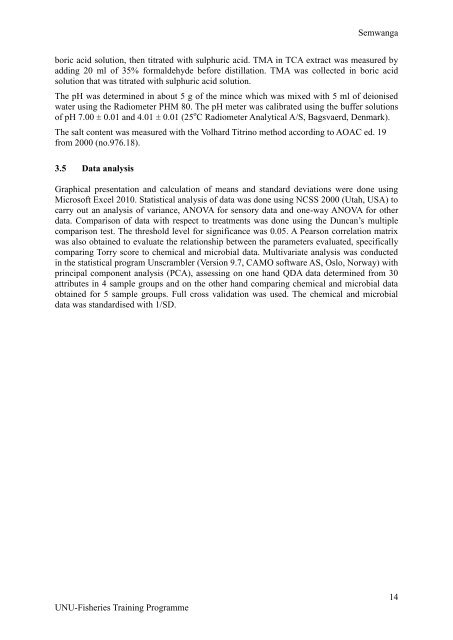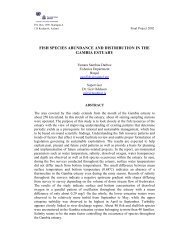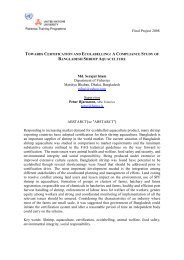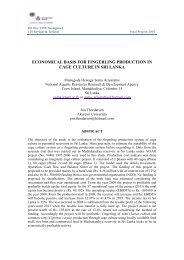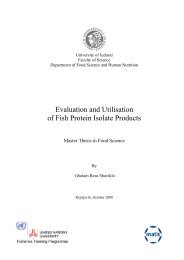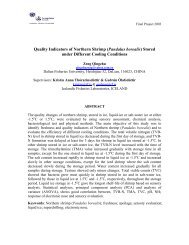THE EFFECT OF DIFFERENT COOLING TECHNIQUES ON THE ...
THE EFFECT OF DIFFERENT COOLING TECHNIQUES ON THE ...
THE EFFECT OF DIFFERENT COOLING TECHNIQUES ON THE ...
You also want an ePaper? Increase the reach of your titles
YUMPU automatically turns print PDFs into web optimized ePapers that Google loves.
Semwangaboric acid solution, then titrated with sulphuric acid. TMA in TCA extract was measured byadding 20 ml of 35% formaldehyde before distillation. TMA was collected in boric acidsolution that was titrated with sulphuric acid solution.The pH was determined in about 5 g of the mince which was mixed with 5 ml of deionisedwater using the Radiometer PHM 80. The pH meter was calibrated using the buffer solutionsof pH 7.00 ± 0.01 and 4.01 ± 0.01 (25 o C Radiometer Analytical A/S, Bagsvaerd, Denmark).The salt content was measured with the Volhard Titrino method according to AOAC ed. 19from 2000 (no.976.18).3.5 Data analysisGraphical presentation and calculation of means and standard deviations were done usingMicrosoft Excel 2010. Statistical analysis of data was done using NCSS 2000 (Utah, USA) tocarry out an analysis of variance, ANOVA for sensory data and one-way ANOVA for otherdata. Comparison of data with respect to treatments was done using the Duncan’s multiplecomparison test. The threshold level for significance was 0.05. A Pearson correlation matrixwas also obtained to evaluate the relationship between the parameters evaluated, specificallycomparing Torry score to chemical and microbial data. Multivariate analysis was conductedin the statistical program Unscrambler (Version 9.7, CAMO software AS, Oslo, Norway) withprincipal component analysis (PCA), assessing on one hand QDA data determined from 30attributes in 4 sample groups and on the other hand comparing chemical and microbial dataobtained for 5 sample groups. Full cross validation was used. The chemical and microbialdata was standardised with 1/SD.UNU-Fisheries Training Programme14


